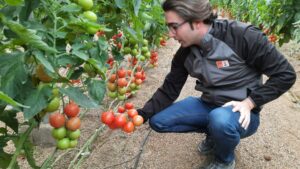I grew up on a small family farm in Northern Wisconsin. Before school, my brother and I pulled a few bales down from the haymow and filled the water tank. As kids, we tried to ride the pigs (impossible!) and cursed the cows when they chewed on the water hose. But in the end, the health and productivity of these animals were our livelihood.
This upbringing is mirrored across the country. According to the USDA, family farms make up 98% of farming operations, generate 88% of farm production and operate on 88% of the total farmland. Farming and animal agriculture is a family affair!
But, it’s not without detractors. Opponents of the meat industry use terms like factory farming and inflate farming’s impact on climate. They fail to acknowledge the incredible productivity gains, such as the 34% increase in milk per cow since 1999 or the 28% increase in average grain corn yield since 2001, both according to Statista. Every farmer feeds 166 people today versus 26 back in 1960.
The hyperboles are used to secure the billions of dollars needed for massive meat manufacturing factories that propose to phase out animal agriculture.
The manufactured meat process, the suggested alternative, involves harvesting stem cells from animals and then replicating them in a medium. The most common medium is fetal bovine serum, which is calf fetus blood. Getting this fetus blood requires killing a pregnant cow and bleeding out the fetus. The manufactured meat industry is working to replace the animal-based medium with a concoction of plant and synthetic ingredients in the future, according to the American Oil Chemists’ Society. I can see why. This process cuts directly against the industry’s animal welfare argument. All this is done in a bioreactor with a heavy dose of antibiotics since the cells have no immune system, according to the National Institute of Health’s National Center for Biotechnology Information.
Factory ownership concentration is also a concern. The world’s largest meat company, JBS, has invested close to $500 million in manufactured meat. Pair that with massive investments from ADM and others and it looks like the usual suspects plan to control the manufactured meat market. They’ve also been able to grab tax-payer dollars from Israel, Singapore and Japan and Hollywood elites, like Leonardo DiCaprio.
But agriculture already has the solution!
New breeding techniques, like gene editing, are unlocking more of plants and our planet’s potential to produce more while using less. Less water, less land, less chemicals and less fertilizer. Improved nutritional composition of grains will reduce the acres needed for animal feed and better cover crops are improving water quality and soil health across the country. This innovation is just getting started and the future is unlimited.








